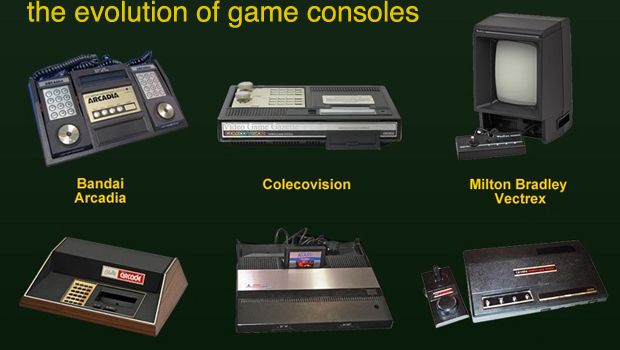

[Updated: March 2023]
The History of Gaming Consoles
Timeline of Gaming Consoles
1967
– Brown Fox
1972
– Magnavox Odyssey
1975
– Magnavox Odyssey 100
– Magnavox Odyssey 200
1976
– Atari Pong
– Coleco Telstar
– Fairchild Channel F
– Magnavox Odyssey 300
– Atari Pong Doubles & Atari Super Pong
– Wonder Wizard 7702
1977
– RCA Studio II
– Coleco Telstar Arcade
– Atari VCS 2600
– Nintendo Color TV Game series
– Coleco Telstar Alpha, Telstar Colormatic, Telstar Ranger
– Magnavox Odyssey 3000
– Magnavox Odyssey 4000
– Atari Video Pinball
– Atari Stunt Cycle
1978
– Bally Professional Arcade
– Telstar Sportsman, Telstar Combat!, Telstar Colortron, Telstar Marksman
– Magnavox Odyssey 2
– APF-M1000
1979
– Mattel Intellivision
– Milton Bradley Microvision
1981
– Epoch Cassette Vision
– Bally Computer System
1982
– Emerson Arcadia 2001
– ColecoVision
– Bandai Arcadia
– Milton Bradley Vectrex
– Atari 5200
– Bally Astrocade
– Coleco Gemini
1983
– Nintendo Family Computer (Famicom) (JPN)
– Casio PV-1000
– Sega SG-1000
– Milton Bradley Vectrex
– Mattel Intellivision II
– Columbia Home Arcade
1985
– Sega Mark III (JPN)
1986
– Atari 7800
– Nintendo Entertainment System (NES) (US)
– Sega Master System (US)
1987
– NEC PC Engine
1988
– NEC PC Engine CD-ROM2
– Sega Genesis
1989
– NEC SuperGrafx
– NEC TurboGrafx-16
1990
– Super Famicom (JPN)
– SNK NeoGeo AES
– Sega Master System II
1991
– Super Nintendo Entertainment System – SNES (US)
– Philips CD-i
– Commodore CDTV
1992
– Sega CD
– NEC TurboDuo
– Sega Genesis 2
1993
– Atari Jaguar
– Panasonic 3DO Interactive Multiplayer
– Commodore Amiga CD32
– Sega CD 2
1994
– Sony Playstation
– Sega Genesis 32X
– Bandai Playdia
– NEC PC-FX
– Sega Saturn
– SNK Neo Geo CD
1995
– Nintendo Virtual Boy
– Casio Loopy
1996
– Nintendo 64
– Sega Skeleton Saturn
1997
– Sega Genesis 2
– Super Nintendo Entertainment System 2
1998
– Sega Dreamcast
2000
– Sony Playstation 2
– Sony PSone
2001
– Microsoft Xbox
– Nintendo GameCube
2004
– XaviX XaviXPORT
2005
– Microsoft Xbox 360
2006
– Sony Playstation 3
– Nintendo Wii
2012
– Nintendo Wii U
2013
– OUYA
– Playstation 4
– Xbox One
2016
– Xbox One S / X (Aug 2nd)
2017
– Nintendo Switch
2019
– Xbox Series X (Dec 12th)
– Nintendo Switch Lite (Sept 20th)
2020
– Playstation 5 (Nov 12th)
– Oculus Quest 2 (Oct 13)*
2021
– Nintendo Switch OLED (Oct 8th)
– Meta Quest 2 (Updated Oculus Quest 2)
2022
– SteamDeck (Feb 22nd)
– Meta Quest Pro
– Powkiddy Retro Handheld
2023
– PSVR 2
– PS5 Pro
*Not a console, but the first time the VR headset became untethered from a PC.
Infographic of The Evolution of Gaming Consoles
The Ones to Remember
The Brown Box
In 1966 engineer Ralph Baer began experimenting with a project to allow consumers to interact with their televisions. Baer and his colleagues referred to the prototypes as boxes and numbered them one through seven, the last of which was referred to as “The Brown Box.” Among the first games was the “fox-and-hounds” game, one player controlled a number of white dots which they used to chase and corner the opposing player’s red dot. In 1968 Baer went in search of a company to take his product public. The prototype referred to as “The Brown Box” is now in the Smithsonian Institute in Washington D.C.
– http://www.pong-story.com/sanders.htm
Magnavox Odyssey
In 1971 Magnavox became the first to license Baer’s “TV Game” and developed the Odyssey home video console based on the technology. The Odyssey had no audio output and could only display black and white images, using translucent screen overlays to simulate color. The Odyssey sold 330,000 units by 1975.
– Manufacturer: Magnavox
– Released: May, 1972
– Price at launch: $100
– http://www.giantbomb.com/odyssey/3045-74/
Atari 2600
After their success with a standalone Pong Console, Atari would go on to create the Atari Video Computer System (Renamed the Atari 2600) “With full-color output, sound, and cartridge-based games, the 2600 became the most successful home console yet” (from BusinessWeek) It would sell 30,000,000 units, and is still in the top 10 best selling consoles of all time.
– Manufacturer: Atari
– Released: November, 1977
– Price at launch: $200
– http://www.giantbomb.com/atari-2600/3045-40/
– http://images.businessweek.com/ss/06/10/game_consoles/source/3.htm
Nintendo Entertainment System (NES)
After the Famicom’s success in Japan, Nintendo brought the console to the U.S. and renamed it the Nintendo Entertainment System. With the decline of the video game console market in 1983, Nintendo decided to market the NES as a toy and appeal to younger audiences. This combined with little game called Super Mario Bros, helped jumpstart the console market and made the NES wildly successful. To date it has sold 61.91 million units.
– Manufacturer: Nintendo
– Released: October, 1985
– Price at launch: $199
– http://www.giantbomb.com/nes/3045-21/
Sega Master System
Sega’s answer to the NES, the Master System was based on their Mark III console sold in Japan. The Master System never sold as well as the NES, either in Japan or in the U.S., it was however quite successful in South America and Europe. Of the 15 million units it sold, 5 million were in Brazil and at least 7 million were in Western Europe.
– Manufacturer: Sega Enterprises
– Released: June, 1986
– Price at launch: $200
– http://www.giantbomb.com/sega-master-system/3045-8/
Turbografx 16
The first to be marketed as a 16-bit console, the Turbografx 16 was also the first console to make use of a CD-ROM peripheral.
– Manufacturer: NEC Technologies, Inc.
– Released: October, 1987
– Price at launch: $199
– http://www.giantbomb.com/turbografx-16/3045-55/
Sega Genesis
Based on Japan’s Sega Mega Drive, the Genesis was the 16-bit follow up to the Sega Master System. With games like Sonic: The Hedgehog, Sonic: The Hedgehog 2, and Aladdin, the Genesis would sell over 40 million units and end up as Sega’s best selling system.
– Manufacturer: Sega Enterprises
– Released: October, 1988
– Price at launch: $200
– http://www.giantbomb.com/genesis/3045-6/
Super Nintendo Entertainment System (SNES)
Based on the 16-bit Super Famicom system, the SNES was a direct competitor with the Sega Genesis which came out two years before. Its new Mode 7 graphics allowed for background scaling, giving the illusion of depth, this, coupled with games like F-Zero made the SNES incredibly popular. Despite the Genesis’ headstart, the SNES would go on to outsell it with 49.1 million units sold.
– Manufacturer: Nintendo
– Released: August, 1990
– Price at launch: $199
– http://www.giantbomb.com/super-nintendo-entertainment-system/3045-9/
Sega Saturn
Successor to the Genesis, the 32-bit Sega Saturn had multiple processors for different purposes, making it difficult to develop games for. Despite having relatively few titles available at launch, The Sega Saturn sold 170,000 units in Japan in its first day. The system also featured online multiplayer with its NetLink adapter, used by games like Duke Nukem 3D, Virtual On, and Saturn Bomberman.
– Manufacturer: Sega Enterprises
– Released: November, 1994
– Price at launch: $399
– http://www.giantbomb.com/saturn/3045-42/
– http://images.businessweek.com/ss/06/10/game_consoles/source/10.htm
Sony PlayStation
The PlayStation originally began as a collaboration between Sony and Nintendo. Nintendo, wanting to create a CD-ROM add-on for the Super Nintendo. After Nintendo secretly canceled the deal, Sony took what they learned and focused it into making a standalone system, The Sony PlayStation. $100 cheaper than the Sega Saturn, and with games like Tekken, Wipeout, Twisted Metal, and Final Fantasy VII, the PlayStation would quickly outsell its competitors and eventually sell over 100 million units.
– Manufacturer: Sony Computer Entertainment
– Released: December, 1994
– Price at launch: $299
– http://www.giantbomb.com/playstation/3045-22/
– http://images.businessweek.com/ss/06/10/game_consoles/source/11.htm
Nintendo 64
The N64 was a massive leap forward for Nintendo. Its 64-bit processor had double the power of the PlayStation, which had come out two years prior. Nintendo decided to stick with using cartridge-based games, severely hampering sales and losing them a number of partners, including Square-Enix (Squaresoft at the time)
– Manufacturer: Nintendo
– Released: June, 1996
– Price at launch: $199
– http://www.giantbomb.com/nintendo-64/3045-43/
– http://images.businessweek.com/ss/06/10/game_consoles/source/12.htm
Sega Dreamcast
At 128-bits, with a built-in modem for online games, and a 200-MHz processor, the Sega Dreamcast was a console far ahead of its time. Unfortunately, this didn’t translate into sales. Sega would only sell 8 million units worldwide before production on the Dreamcast was stopped in 2001. This would be Sega’s last attempt at a console, deciding instead shift focus into being a third-party developer.
– Manufacturer: Sega Enterprises
– Released: November, 1998
– Price at launch: $199
– http://web.archive.org/web/20080616093349/http://www.planetdreamcast.com/about/sega/
– http://www.giantbomb.com/dreamcast/3045-37/
– http://images.businessweek.com/ss/06/10/game_consoles/source/13.htm
PlayStation 2
Hoping to follow up on the success of the original PlayStation Sony releases the PlayStation 2. With a 128-bit RISC processor called the “Emotion Engine”, a clock speed of 300MHz, DVD movie playback, and backwards compatibility with PlayStation games, it was the most advanced console on the market. Within two days of its release it sold 980,000 units. To date the PlayStation 2 has sold over 150 million units, making it the best selling home video game console in the world.
– Manufacturer: Sony Computer Entertainment
– Released: March, 2000
– Price at launch: $299
– http://www.allgame.com/platform.php?id=47
– http://www.giantbomb.com/playstation-2/3045-19/
– http://images.businessweek.com/ss/06/10/game_consoles/source/14.htm
Xbox
Marking Microsoft’s first foray into making hardware, the Xbox had a host of features that could be traced back to Microsoft’s PC roots. It had a broadband-ready Ethernet port to make use of its new service “Xbox Live”, “an NVIDIA graphics processing unit (GPU) delivering more than three times the graphics performance of other consoles.” (Quote from Giantbomb, in the features section at the bottom), and was the first console on the market to include an internal hard drive. It was also host to the console exclusive Halo: Combat Evolved.
– Manufacturer: Microsoft
– Released: November, 2001
– Price at launch: $299
– http://www.giantbomb.com/xbox/3045-32/
– http://images.businessweek.com/ss/06/10/game_consoles/source/16.htm
Nintendo Gamecube
Unlike the PS2 and Xbox, the Gamecube had no DVD playback capabilities; in fact its games came recorded on mini DVDs. Despite its size, the Gamecube was more powerful than the PlayStation 2.
– Manufacturer: Nintendo
– Released: September, 2001
– Price at launch: $199
– http://www.giantbomb.com/gamecube/3045-23/
– http://images.businessweek.com/ss/06/10/game_consoles/source/17.htm
Microsoft Xbox 360
Co-Developed with ATI, IBM, and Silicon Integrated Systems, Microsoft’s Xbox 360 was the first console in the next generation (7th generation) and with the triple-core IBM designed Xenon as its CPU, was far superior to any system seen before. A revamped Xbox Live reported 3 million connected users and 18 million downloads within the first six months. In 2010 Microsoft released a redesigned version of the Xbox 360, the Xbox 360 S was smaller, ran quieter, and was as the “S” stated slimmer.
– Manufacturer: Microsoft
– Released: November, 2005
– Price at launch: $299 – $399
– http://www.gamespot.com/news/77-million-xbox-360s-sold-6407243
– http://images.businessweek.com/ss/06/10/game_consoles/source/20.htm
– http://www.giantbomb.com/xbox-360/3045-20/
– http://www.microsoft.com/en-us/news/press/2006/may06/05-09E3GamesPR.aspx
Sony PS3
When launched in 2005, Sony announced that the PlayStation 3 would be part of a longer (10 year) generation cycle for consoles. To keep it competitive over the long cycle, it had an NVIDIA RSX ‘Reality Synthesizer’ GPU with 256 MB of GDDR3 video memory, 512 MB of system memory, a Gigabit Ethernet port, 4 USB 2.0 ports, and came with a built-in Blu-ray disc drive. Since its release, it has sold over 77 million units.
– Manufacturer: Sony
– Release date: Nov, 2006
– Price at launch: $499 – $599
– http://www.giantbomb.com/playstation-3/3045-35/
Nintendo Wii
In 2005, after five years in development, Nintendo released the successor to the GameCube. The concept behind the Wii was to change the way players interacted with their consoles and the games, this was given form through the motion sensitive remote and heavy use over peripherals. While not an inherently powerful system, the Wii’s innovative motion controls and core Nintendo games helped the console sell close to 100 million units.
– Manufacturer: Nintendo
– Release date: Nov, 2006
– Price at launch: $249
– http://www.giantbomb.com/wii/3045-36/
– http://www.cnn.com/2009/HEALTH/02/11/wii.fit.elderly/
– http://venturebeat.com/2009/07/31/wiiassist-hacking-the-wii-controller-for-disabled-applications/
Wii U
The first console in the 8th generation of video game home consoles, the Nintendo Wii U was released a full five months before the PlayStation 4 was even announced. The Wii U was released in two versions a “Basic” white, and a “Deluxe” black. With the Wii U, Nintendo introduced the Wii U Gamepad, a controller with a built in 16:9 aspect ratio touchscreen, allowing the player to use either the TV or the touchpad itself as the primary display screen. When using the TV as the primary display, the touchscreen on the Wii U can instead be used to supplement gameplay in a variety of ways.
– Manufacturer: Nintendo
– Release Date: Nov, 2012.
– Price at launch: $300 for Basic, $350 for Deluxe
– http://www.giantbomb.com/wii-u/3045-139/
– http://www.nintendo.com/wiiu/features/tech-specs/
Playstation 4 (2013) and Xbox One (2013)
Revealed three months apart, these will be Sony’s and Microsoft’s entries in the 8th generation of video game home consoles. Each has a host of new features while bringing back fan-favorite features from previous generations. The consoles themselves focus on power and performance with increased RAM and 8-core CPU’s based on AMD’s new Jaguar architecture. More information on both consoles will be revealed at the Electronic Entertainment Expo (E3) on June 11th – 13th.
– http://www.giantbomb.com/playstation-4/3045-146/
– http://www.giantbomb.com/xbox-one/3045-145/
Nintendo Switch
The original Nintendo Switch was a ‘hybrid’ console, consisting of a console unit, a dock that is connected to a TV, and two Joy-Con controllers. Although it is a hybrid console, Nintendo considered it as “a home console that you can take with you on the go”. The screen supports multi-touch and includes haptic technology along with a 6.2 inch LCD screen that supports resolutions up to 720p (1280×720 px).
Playstation 5 (2020) and Xbox Series X (2019)
Released within two months of each other, these are the current consoles
Console Firsts
First…
– …video game console Magnavox Odyssey
– 1975
– …game console to offer online gaming
– Super Nintendo Entertainment System with the Satellaview
– 1995
– …game home console to sell more than 100 million copies
– PlayStation 2
– 2000
– …game console to sell more than 1 million copies in the United States in one year
– Wii
– 2007
– …game console to sell more than 50 million copies
– Nintendo Entertainment System
– 1985
– Source
– http://en.wikipedia.org/wiki/User:GameLegend/List_of_firsts_in_video_games
Best Selling
– 1. Sony Playstation 2 155 Million Units
– 2. Sony Playstation 102.49 Million Units
– 3. Nintendo Wii 99.84 Million Units
– 4. Microsoft Xbox 360 77.2 Million Units
– 5. Sony Playstation 3 77 Million Units
– 6. Nintendo NES 61.91 Million Units
– 7. Nintendo SNES 49.1 Million Units
– 8. Sega Genesis 40 Million Units
– 9. Nintendo 64 32.93 Million Units
– 10. Atari 2600 20 Million Units
– Playstation/PS2/PS3 –
– http://www.sbs.com.au/news/article/1735312/Sony-to-announce-launch-of-new-PlayStation
– NES/SNES/N64/Wii – http://www.nintendo.co.jp/ir/library/historical_data/pdf/consolidated_sales_e1303.pdf
– Xbox 360 –
– http://www.nintendo.co.jp/ir/library/historical_data/pdf/consolidated_sales_e1303.pdf
– Sega Genesis –
– http://www.giantbomb.com/genesis/3045-6/
– Atari 2600 –
– http://images.businessweek.com/ss/06/10/game_consoles/source/3.htm
The History of Gaming Consoles: From Brown Fox to Modern-Day Marvels
Gaming consoles have come a long way since the Brown Fox was released in 1967. This simple console allowed players to play basic games, but it paved the way for more advanced gaming consoles that would soon follow.
In the 1970s, the Magnavox Odyssey, the first home console, was released. It allowed players to play games such as tennis and ping pong. However, it wasn’t until the 1980s that consoles really took off. The Atari 2600 was a huge success, and classic games like Space Invaders, Pac-Man and Donkey Kong were introduced.
The 1990s saw the release of the Sega Mega Drive, which featured Sonic the Hedgehog, one of the most iconic video game characters of all time. The Super Nintendo Entertainment System (SNES) was also released, featuring classic games such as Super Mario World, The Legend of Zelda: A Link to the Past, and Donkey Kong Country.
The PlayStation, released in 1994, was Sony’s first gaming console and quickly became a favourite with gamers. Games such as Metal Gear Solid, Final Fantasy VII, and Crash Bandicoot were released on the console.
In the 2000s, the PlayStation 2 was released, becoming the best-selling gaming console of all time. Iconic games like Grand Theft Auto: San Andreas, God of War, and Metal Gear Solid 2 were released on the console.
The Xbox, released in 2001, was Microsoft’s first gaming console, and it featured games like Halo: Combat Evolved, Project Gotham Racing, and Fable. The Nintendo GameCube, released in 2001, featured games like Super Smash Bros. Melee, The Legend of Zelda: The Wind Waker, and Mario Kart: Double Dash.
The PlayStation 3, released in 2006, featured games like Uncharted: Drake’s Fortune, Metal Gear Solid 4, and LittleBigPlanet. The console also introduced online gaming through the PlayStation Network, which allowed players to play games with other players around the world.
The Xbox 360, released in the same year, was a huge success, and featured games such as Halo 3, Gears of War, and Mass Effect. The console also introduced online gaming through Xbox Live, which allowed players to play games with other players around the world and access digital content like movies and music.
Both the PlayStation 3 and the Xbox 360 featured improved graphics and gameplay mechanics, and were able to play high-definition video content. The two consoles were also rivals, with each company trying to outdo the other in terms of features and games.
Despite the rivalry, both consoles were hugely popular and helped to shape the modern gaming landscape. They paved the way for the current generation of consoles, which continue to push the boundaries of what is possible in gaming.
The current generation of consoles includes the PlayStation 5 and the Xbox Series X, both released in 2020. These consoles are more powerful than ever before, with advanced graphics and gameplay mechanics. Standout games on these consoles include Demon’s Souls, Spider-Man: Miles Morales, and Assassin’s Creed Valhalla.
The evolution of gaming consoles has been incredible, from the simple Brown Fox to the modern-day marvels of the PlayStation 5 and Xbox Series X. Each generation has brought new features, improved graphics, and innovative gameplay mechanics. It’s hard to imagine what the future of gaming consoles will bring, but one thing is for sure: gamers will always be eager for the next big thing.

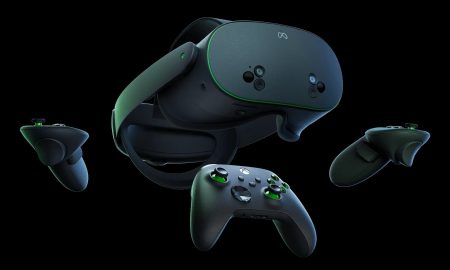

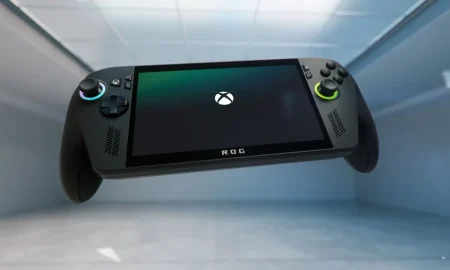


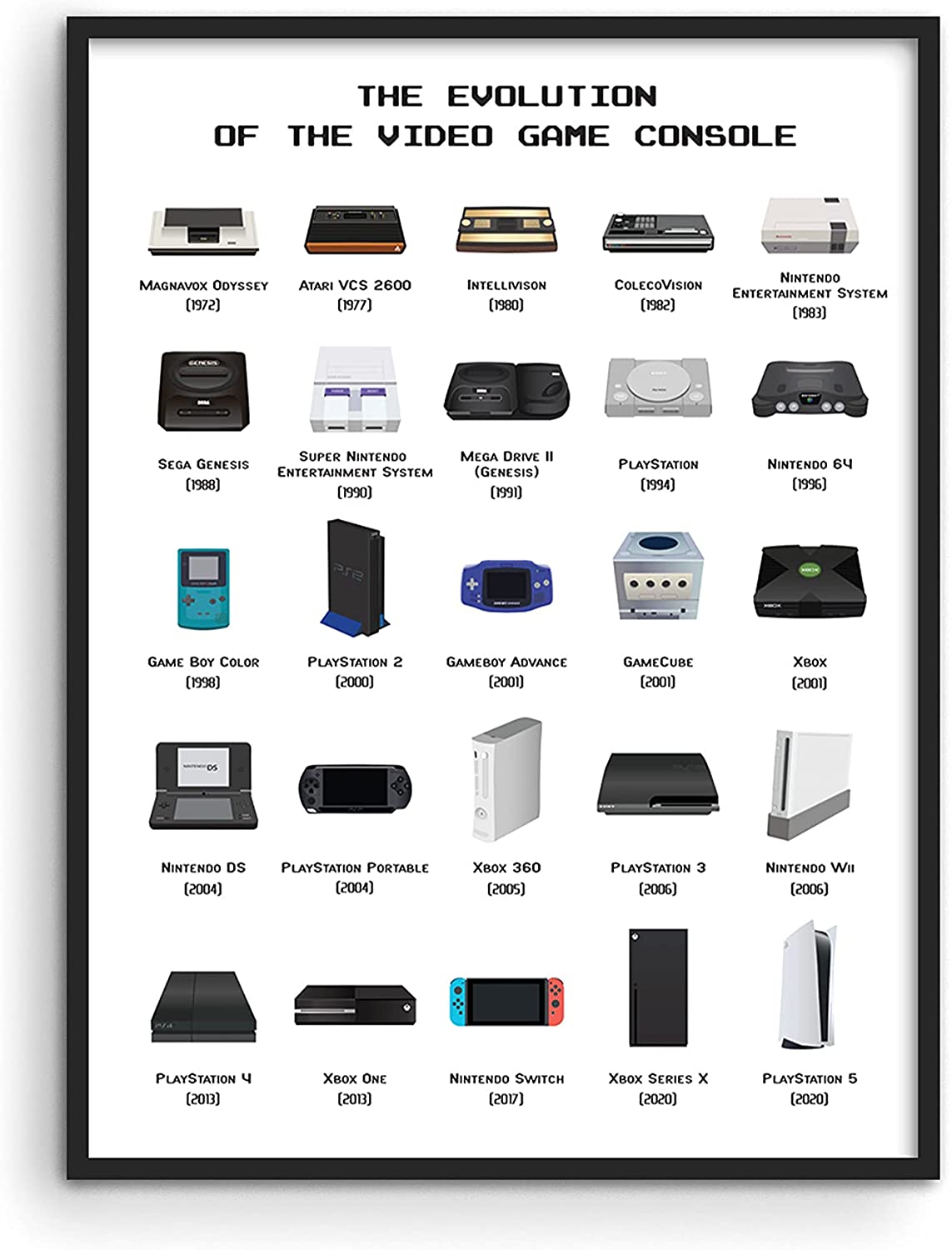
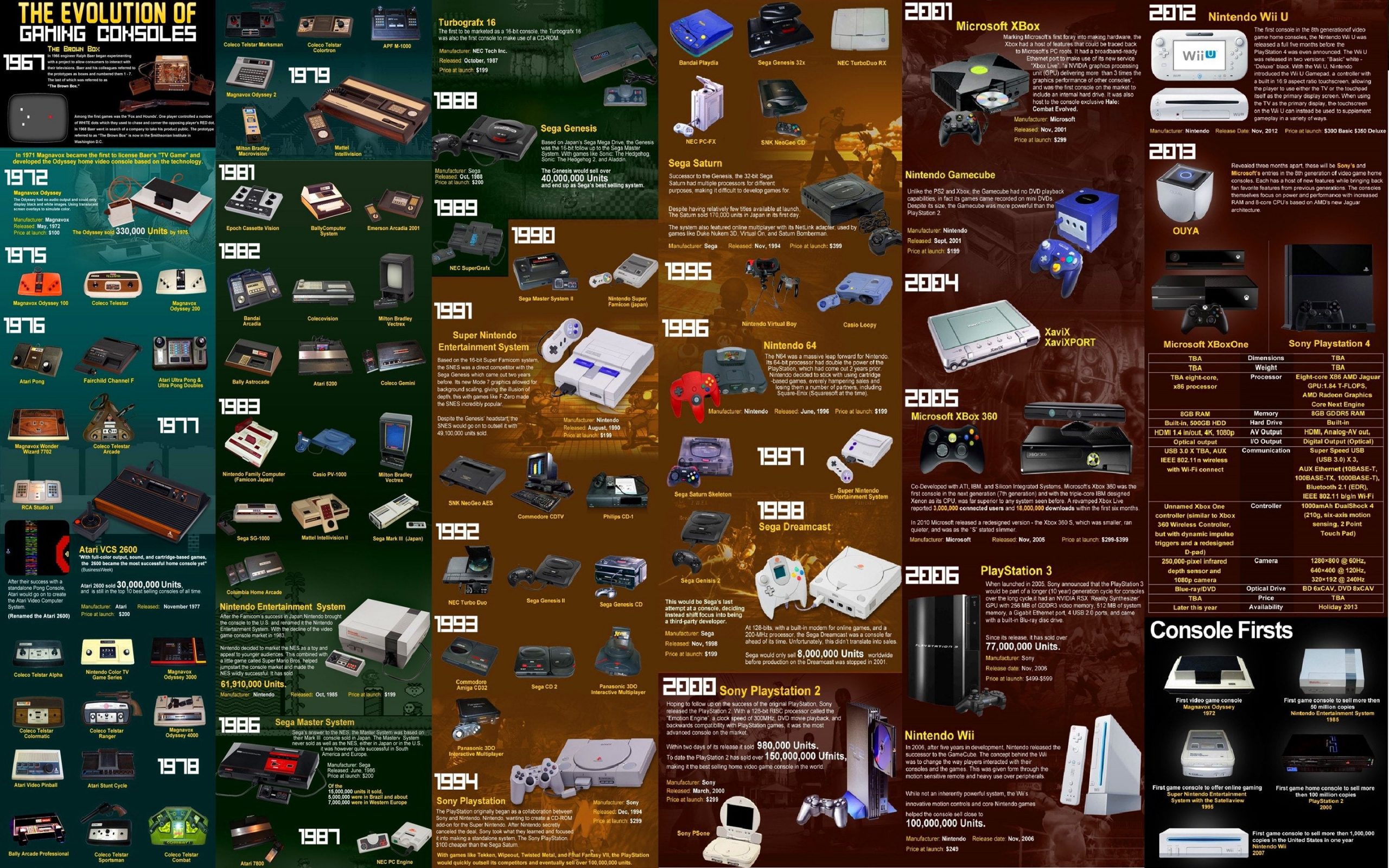








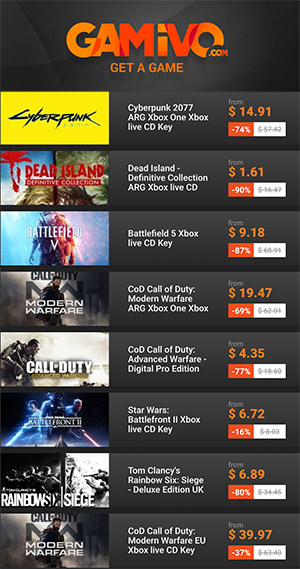
















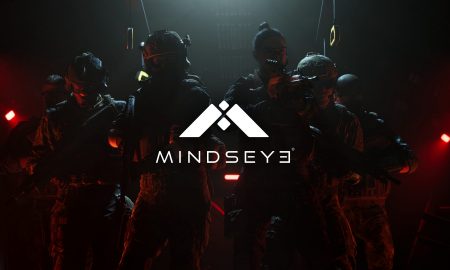
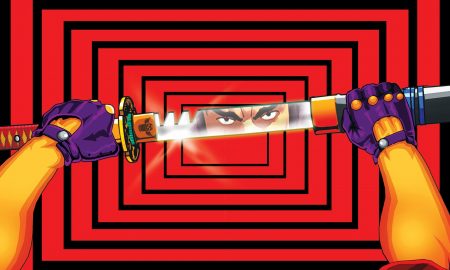
You must be logged in to post a comment Login